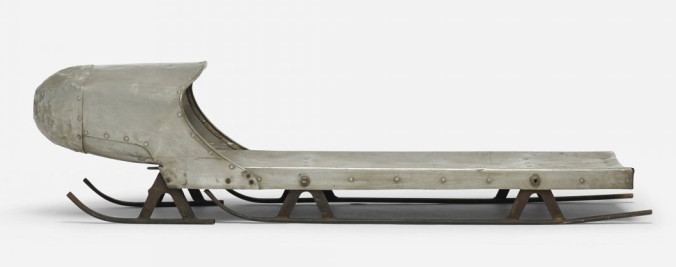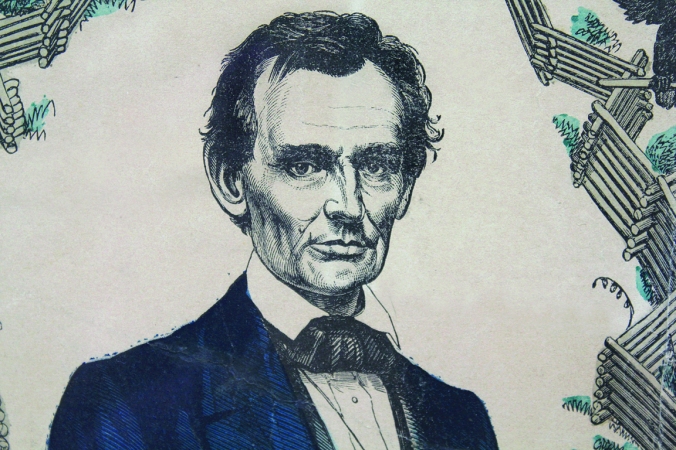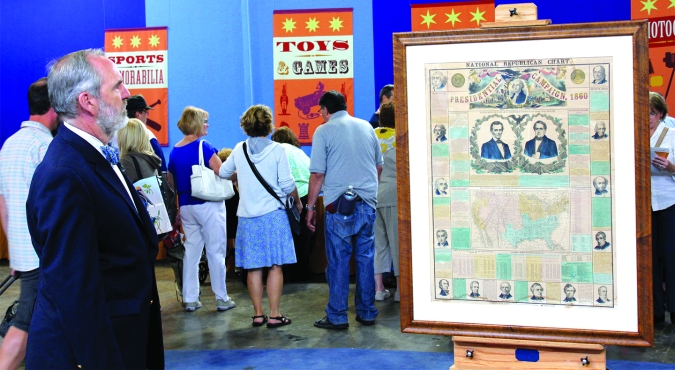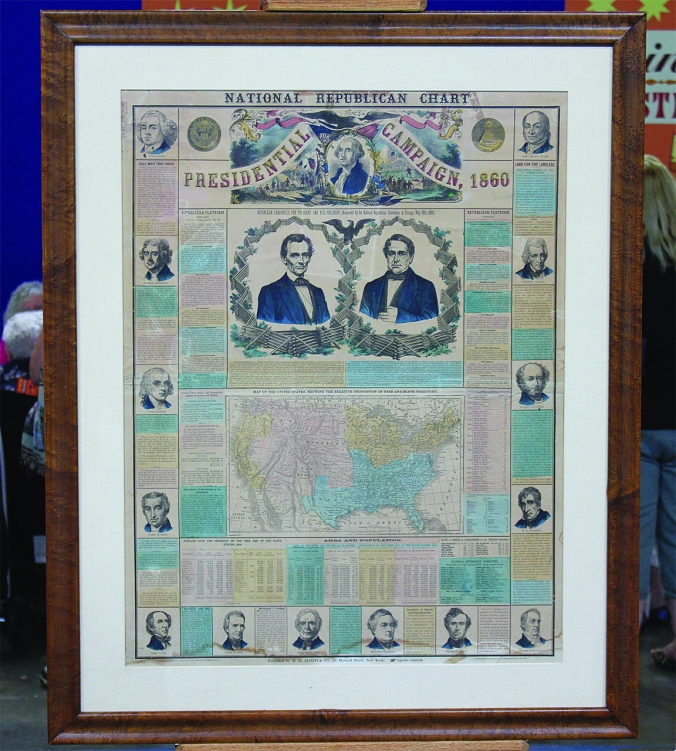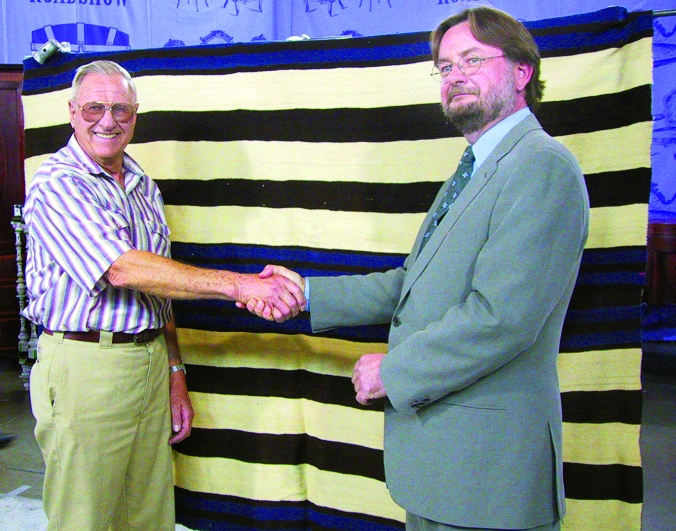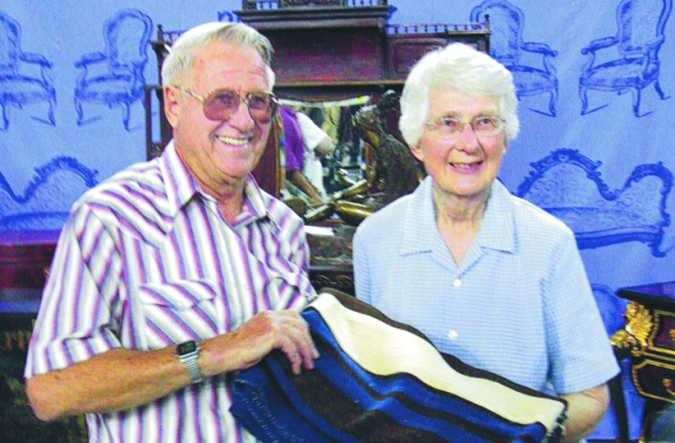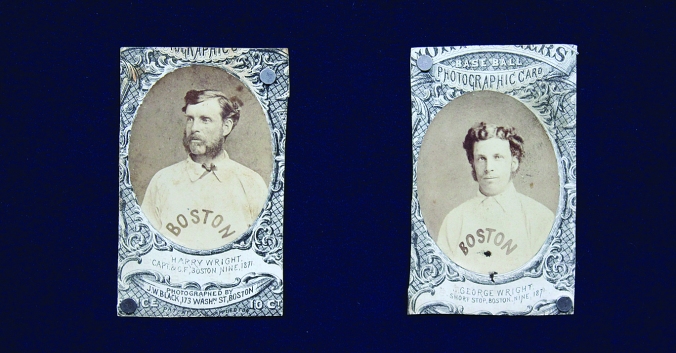
The “other” Wright Brothers as captured on 1871-72 cards: professional baseball pioneers and Boston Red Stockings stars Harry Wright (captain, outfielder, and occasional pitcher) and his brother George Wright (“short stop”). [Photos by Larry Canale]
Leila Dunbar has been serving as an
Antiques Roadshow appraiser for 19 years and has been a dealer, auction-house director, and auctioneer for nearly three decades. The daughter of a salvage-yard owner in Maynard, Mass., she grew up around antique and collectible “stuff,” got involved in the family business as a teen and while in college, and went on to serve around 10 years at Sotheby’s coordinating major sports and entertainment auctions.
But Dunbar had never seen anything like the 1871-72 Boston Red Stockings baseball cards that landed on her table during Antiques Roadshow‘s stop in New York on Aug. 9. Dunbar appraised the cards along with several related artifacts at a cool $1 million.
It’s a monumental find—the biggest sports item, dollar-wise, ever to get taped for television at an Antiques Roadshow event—and a reminder that even when you think you’ve seen everything, an undiscovered relic can turn up. “No one could have ever expected that something like this would exist,” Dunbar says, “but I have found that even today, rarities are being discovered. That is the beauty of Antiques Roadshow.”
The million-dollar appraisal figure, she emphasizes, is based on insurance value, rather than auction or retail estimates. “We determined an insurance value because the guest has no intention of selling,” Dunbar explains. “She wants to keep the archive in the family. The archive was valued as one group because, given the provenance, the total value is greater than the individual parts. It is unique.”
The 1870s stash centered on 12 paper-thin cards hand-cut — though not very well — from scorecards published by Mort Rogers, a former player. One of them is a collage of players — “The Boston 11.” The other 11 cards of are single-player issues featuring a sepia-toned image topped by a banner reading “Photographic Card.” (Mort Rogers’ name originally appeared above those words.)
The lot also included an album that housed the cards; the earliest known cabinet card of Albert G. Spalding; a game pass; and a handwritten letter.
The latter document may have the most value: It includes notes and signatures from future Hall of Famers Spalding, Harry Wright, and George Wright, among other players. The double-sided letter’s content involves the meals the players were getting while on the road playing in Washington. Apparently, it wasn’t as inviting as the meals they were used to at their Boston-area boardinghouse, run by Mrs. Parker. Harry Wright wrote: “I am just going up stairs to supper and feel awful hungry but do not expect much, poor meals here. Too hungry to say more.” Spalding: “‘Would that we were home again.’ My sentiments have been expressed in the above paragraphs….”
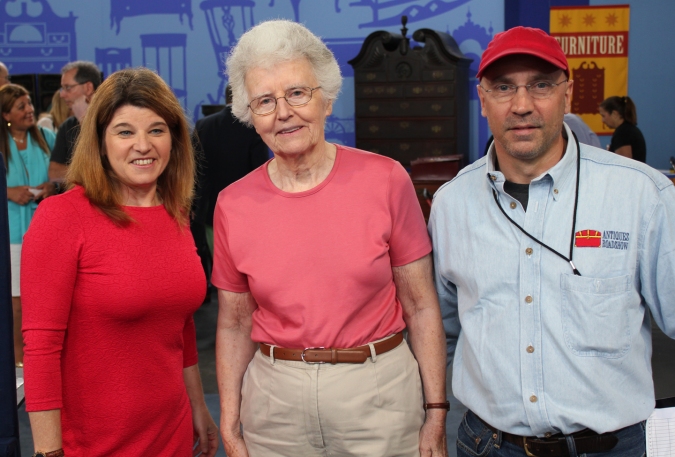
Sports appraiser Leila Dunbar and Antiques Roadshow supervising producer Sam Farrell flank the owner of a collection of virtually unknown 1870s baseball cards and related memorabilia.
Dunbar was visibly wowed by the find, as were her fellow sports memorabilia appraisers at Antiques Roadshow. The owner of the collection (her name was withheld) was, naturally, excited as well, but also surprisingly calm considering the seven-figure valuation. She had been offered $5,000 for the collection a while back but declined. Smart move. She said she inherited the collection from her great-great-grandmother — the same woman who ran the Boston boardinghouse where the Red Stockings stayed in the early 1870s. Charlie Parker, her son, was the baseball fan who owned the season pass and collected (and trimmed and stashed) the player photographs from the scorecards.
The find, Dunbar says, “is extraordinary in that it combines some of the earliest known photo cards of the pioneers of pro baseball, the earliest photo cabinet card of Spalding, and a letter that shows the human side of the players — an intimate glimpse into their lives and their relationship with the owner of the boardinghouse, which really was their home during the season.”
The website Baseball-Reference.com shows that the 1872 Boston franchise finished first in the old National Association with a 39-8 record. The team’s leading hitter was second baseman Ross Barns (.430).
On the mound, Albert Spalding was the man. In those days, pitchers tended to throw complete games almost all of the time. There were no five-man rotations or bullpens packed six or seven deep with relievers. So Spalding pitched — per baseball’s record books — 404 innings in the Red Stockings’ 47-game season and compiled a 38-8 record. Harry Wright is the only other name to show up in the team’s pitching stats: He tossed 25 innings, won one game, and saved four others during the season. Both men were tough to hit: The rubber-armed Spalding had an ERA of 1.85 and Wright’s was 2.10. Boston’s starting lineup usually went the distance, too. After all, the team’s bench included just one utility man — in this case Dave Birdsall, who played in 16 games. (The 11th player to be pictured on a card in this collection never actually got into a game for Boston.)
The National Association was one of a number of professional baseball leagues to sprout up during the era. It disbanded after the 1875 season, which featured a fourth straight title by the Bostons. The following season, the Red Stockings moved on to the fledgling National League and ultimately would become, yes, the Atlanta Braves. In between, they were the Boston Beaneaters (1883-1906), Doves (1907-1910), Rustlers (1911), Braves (1912-1935), Bees (1936-1940), and Braves again (1941-1952). They moved west to Milwaukee in 1953 and played as the Braves until moving to Atlanta in 1966.
So the biggest story during Antiques Roadshow‘s visit to New York, ironically, involved Boston baseball. What are the odds?
For me, personally, the find ranks among the most memorable I’ve seen at Antiques Roadshow events over 13 years (see earlier blogs). To be honest, there was another big-ticket, eye-popping baseball item that was about to land in this space, but… as I wrote last time, it’ll have to wait.
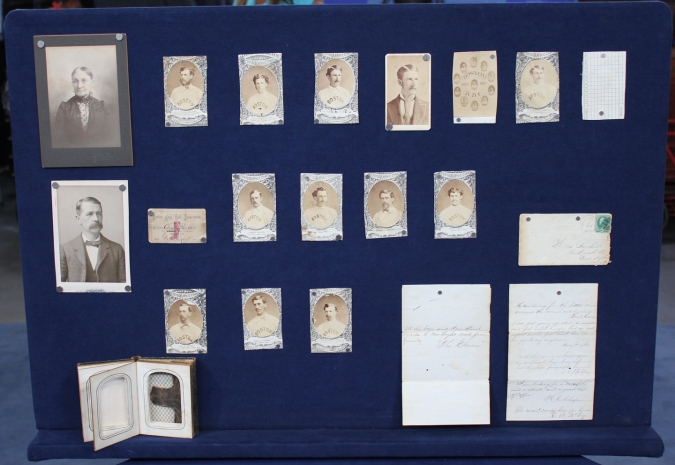
The million-dollar baseball collection, with “Photographic Cards” and a letter signed by two future Hall of Famers leading the way.

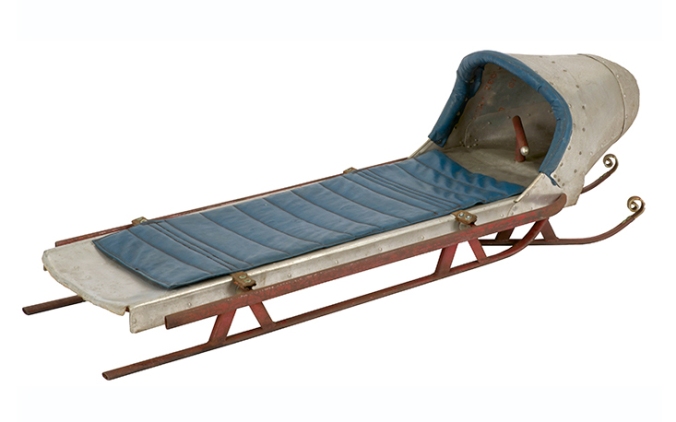 A similar sled sold in 2013 at Wright Auctions in Chicago. Made around 1935 and bearing the same sort of Art Deco design, the one pictured below has measurements of 55.5 inches long and 16.5 inches wide. It brought $3,000 despite missing a side handle and showing heavy use. Somebody had a lot of fun on this one over many years, judging by its dents and nicks on apparently rough slope.
A similar sled sold in 2013 at Wright Auctions in Chicago. Made around 1935 and bearing the same sort of Art Deco design, the one pictured below has measurements of 55.5 inches long and 16.5 inches wide. It brought $3,000 despite missing a side handle and showing heavy use. Somebody had a lot of fun on this one over many years, judging by its dents and nicks on apparently rough slope.
